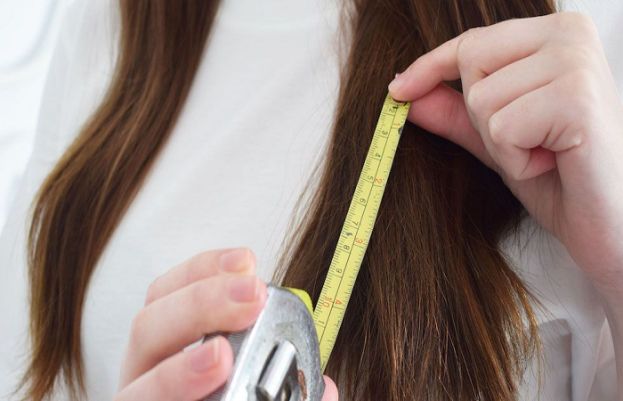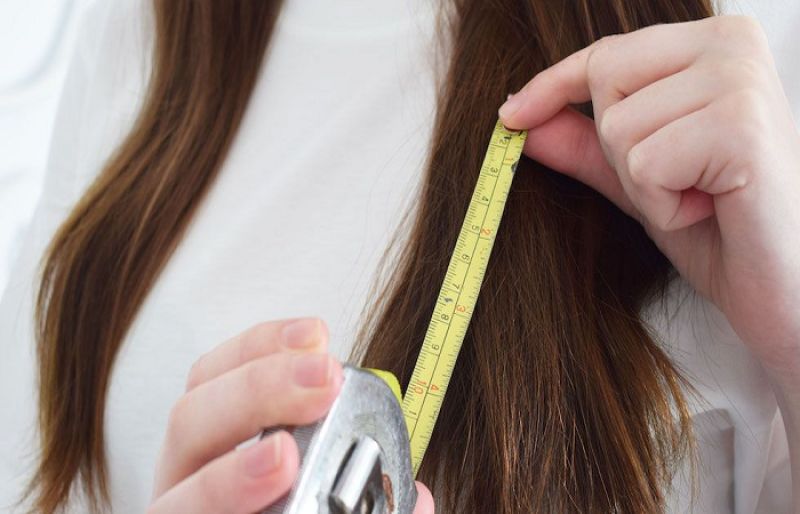[ad_1]

The rate at which hair grows depends on many factors, including the person’s age, race and diet. Racial differences in hair growth rate appear to be determined by genetic factors, rather than environmental factors, according to a 2016 study published in the European Journal of Dermatology.
Healthy human hair grows at an average rate of 0.01 inch (0.35 millimeters) per day, which adds up to roughly 0.5 inch (13 mm) per month, or 6 inches (15 centimeters) per year, according to the medical resource StatPearls.
However, this commonly cited rate of hair growth applies mostly to white people. The hair of people of other races, such as those of Asian or African descent, tends to differ from the hair of white people in several ways — for example, in its density (how closely hair strands are packed together), the angle at which hair grows, and even the overall growth rate, according to a 2005 study published in the International Journal of Dermatology.
In people of African descent, hair tends to grow around 0.2 inch (5 mm) per month, whereas Asian people’s hair often grows much faster, at up to 0.8 inch (20 mm) per month, Sally-Ann Tarve, a trichologist at Cotswold Trichology clinic in England, told Live Science by email. Racial differences in hair growth rate appear to be determined by genetic factors, rather than environmental factors, according to a 2016 study published in the European Journal of Dermatology.It should be noted, however, that hair growth does not occur at a steady rate in anyone, regardless of their race.
There are three primary phases of the hair follicle cycle: anagen, catagen and telogen. Most hair growth occurs during the anagen phase, which can last anywhere from two to six years. It slows down during the catagen phase and then completely stops in the telogen (resting) phase. After approximately three months of inactivity, the “dead” hair is shed and the cycle continues, according to StatPearls.
What other factors affect the growth rate of human hair?
Many genetic and environmental factors influence the rate of hair growth, Dr. Mia Jing Gao, a consultant dermatologist at the Cadogan Clinic in England, told Live Science by email.
Age is one of the biggest factors in hair growth. As we get older, our hair follicles begin producing thinner hair at a slower pace, and eventually, the follicles may even stop producing hair altogether. Bodily changes related to aging play a big role in both female and male pattern baldness, Gao said. The hair cycle is also affected by various hormones. For example, during pregnancy, high levels of estrogen in the body boost the rate of hair growth and increase hair thickness, she said.
Stress and illness may also affect the rate of hair growth. “In a normal healthy scalp, about 80% of the hairs are actively growing,” Gao said. “Psychological or physical stress, such as having major surgery, can cause 70% of the growing hairs to be triggered into a resting state.” Events that might trigger such a shift include severe infections; hormonal changes after pregnancy; crash dieting; and iron deficiency, according to StatPearls.
The rate of hair growth may vary throughout the year. According to a 1991 study published in the British Journal of Dermatolog, the proportion of hair follicles in the growth phase appears to peak in March and then fall steadily over the following six months. Scientists suggest that these seasonal changes may be linked to weather conditions. For example, cold temperatures may put stress on hair follicles, leading to slower hair growth. However, these measurements were obtained from a small sample of white men in the United Kingdom, and as such, the findings may not apply to different populations.
Lastly, eating a well-balanced, varied diet containing all essential nutrients may help increase the rate of hair growth. For example, failing to consume enough iron, vitamin D or vitamin C can slow hair growth, according to a 2017 report in the journal Dermatology Practical & Conceptual.
[ad_2]
Source link



